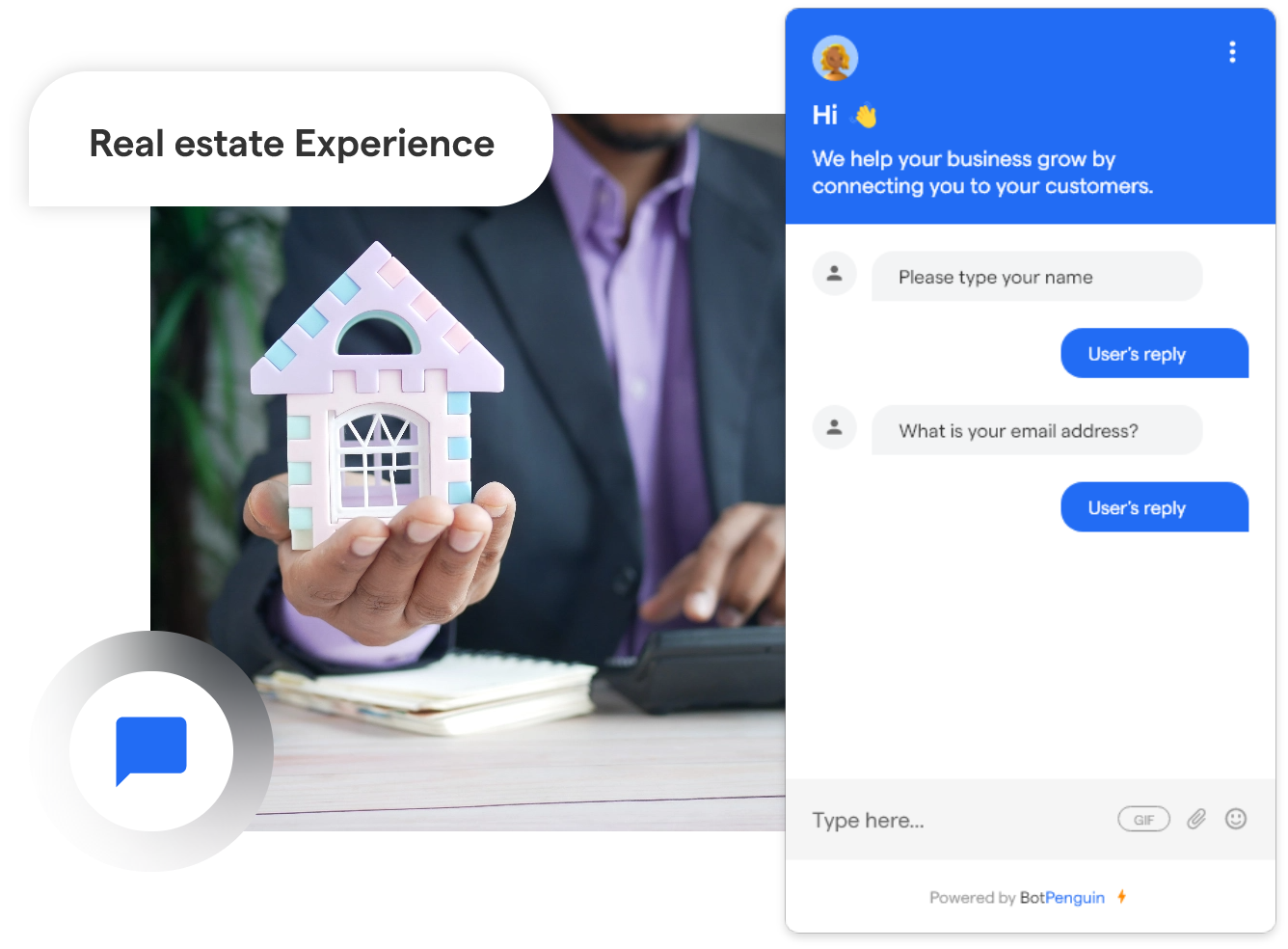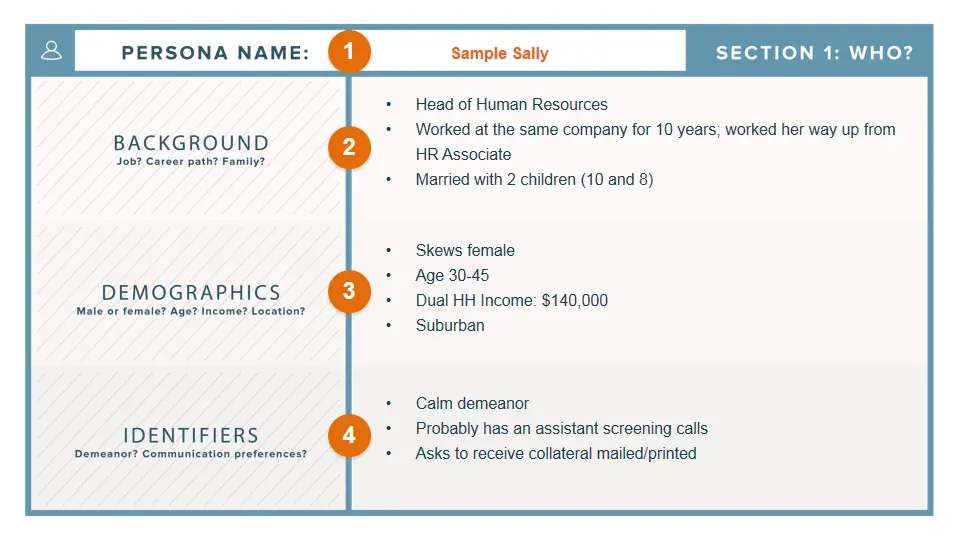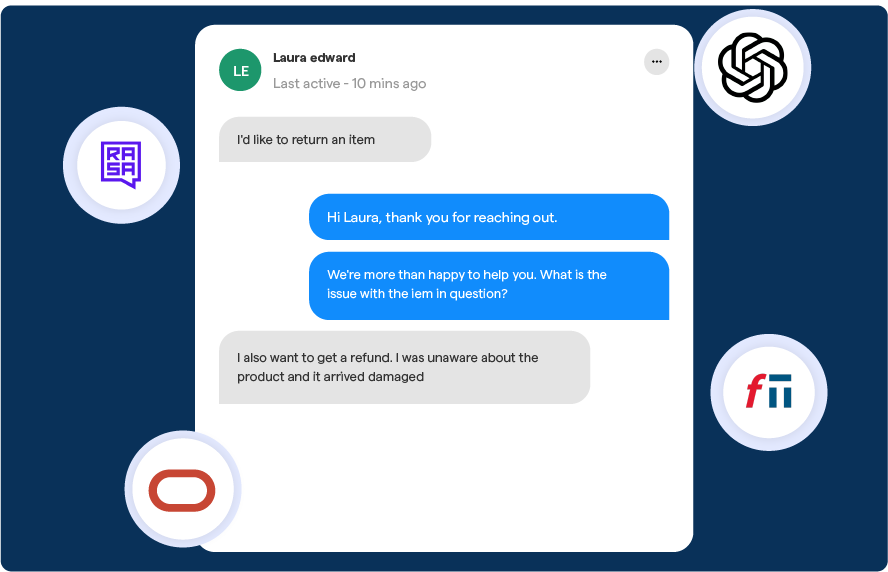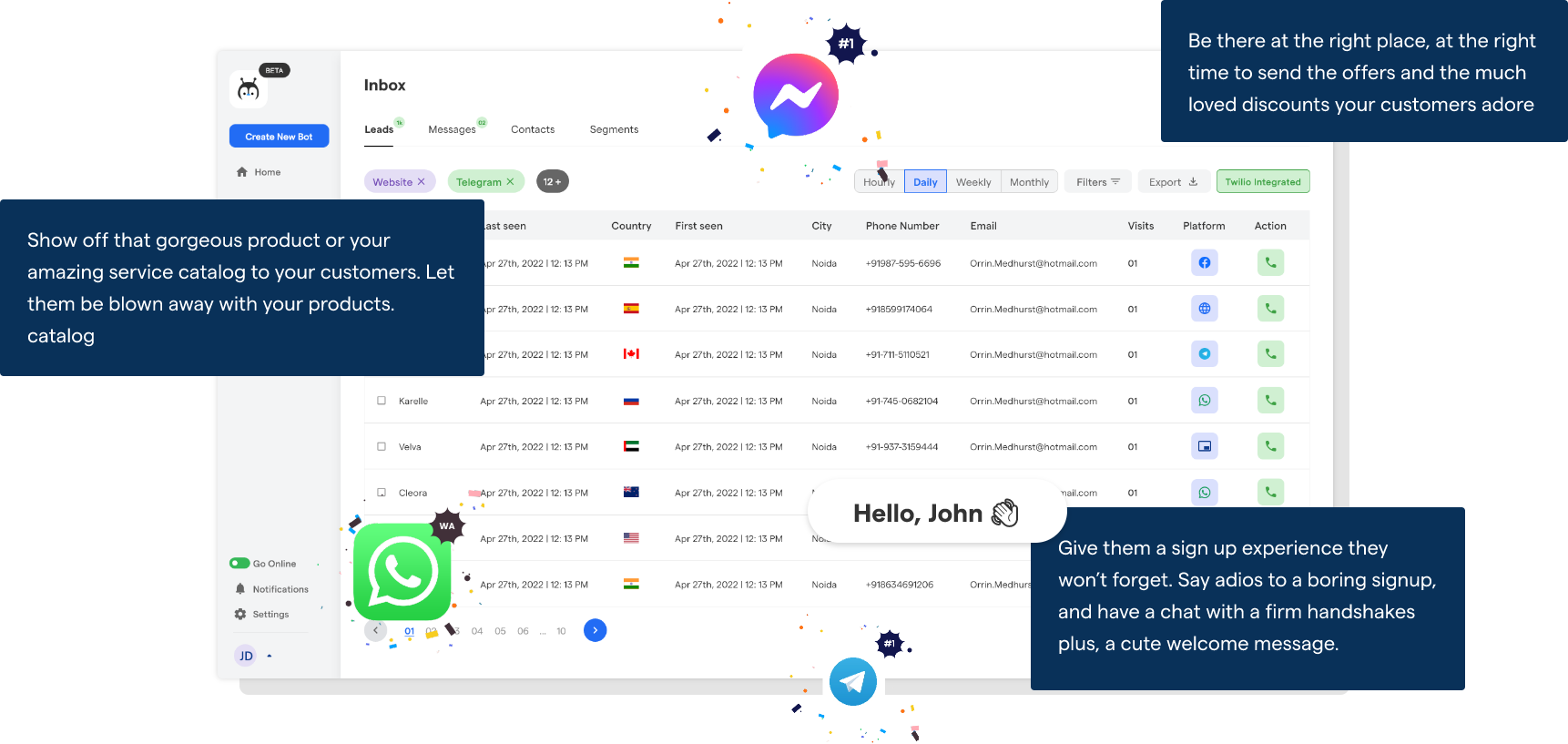Real estate agents must be able to manage multiple jobs at once while remaining organized to be effective.
This can be quite difficult if you operate online.
However, there are some things you can do to simplify things.
For example, using a chatbot for real estate is an excellent way to manage your business, engage with clients, and stay on top of things.
The National Association of Realtors reports that millennials dominate the home-buying market, representing 37% of all purchases. Within this demographic, those aged 29 to 38 are particularly active. Gen Xers make up the second-largest group at 24%. Additionally, 67% of millennial internet users in the US are willing to buy from companies using chatbots, as per StickText.
The truth is that, no matter how hard we strive to maintain human-to-human connections, bots outnumber humans in internet business.
It's time to give the consumer what they want (fast and personal service) while also giving your website a fighting chance of satisfying the expectations of your website visitors.
Let’s build a chatbot for real estate in 8 Easy Steps.
Step 1: Define the Goal of the Chatbot

Before you dive into building your chatbot, it's important to define its goal. Are you looking to enhance customer support, generate leads, or provide property recommendations?
For your chatbot to be successful in the real estate industry, you must understand its function. Spend time thinking through and researching your chatbot's precise purposes and aims.
You can then create a chatbot tailored to your needs.
Step 2: Identify the Target Audience
You must be completely aware of your target audience to develop a chatbot that appeals to them.
Define the characteristics of your ideal users – are they first-time home buyers, property investors, or real estate agents?
By crystallizing your target audience, you'll gain valuable insights into their needs and pain points. Conduct market research and analyze your audience's challenges in the real estate industry.
This will enable you to tailor your chatbot's functionalities and responses to their concerns.
Creating a Buyer Persona

Developing a buyer persona for your target audience will help you better understand their motivations, preferences, and behaviors. So, consider factors like age, income level, location, and buying preferences.
By crafting a detailed buyer persona, you can ensure that your chatbot offers relevant and personalized guidance to users.
Understanding Pain Points
Identify the pain points of your target audience in the real estate industry.
Do they need help finding the right property, getting accurate information, or navigating the complexities of the buying process?
Understanding these pain points will allow you to design your chatbot features and responses in a way that directly addresses these challenges.
With a clear understanding of your target audience's needs and pain points, you can develop a chatbot that becomes their trusted assistant in the real estate journey.
Step 3: Choose the Right Platform and Chatbot Provider
Now that you have a clear goal and target audience, it's time to bring your chatbot to life. But where do you start?
Choosing the right platform and chatbot provider is key to building a successful chatbot in the real estate industry. And guess what?
BotPenguin chatbot would be the best and most realistic approach in this situation. BotPenguin would be delighted to assist you with installing your bot and guiding you to success.
Evaluating Different Platforms
Several platforms are available for building chatbots, each with strengths and features. Take the time to evaluate different platforms and consider factors such as ease of use, customization options, integration capabilities, and scalability.
Look for platforms offering industry-specific templates or plugins to streamline your real estate chatbot development process.
Again, you can consider BotPenguin. It will fit into your business properly and fulfill all your demands.
Selecting the Best Chatbot Provider
After pinpointing your ideal platform, choosing the best one is vital. Assess cost, customer support, reputation, and advanced features like NLP and machine learning. Opt for a provider that matches your needs and budget.
And finding one for yourself isn't that tough. Meet Botpenguin, the home of chatbot solutions. With all the heavy work of chatbot development already done for you, move forward to setting up a top-notch chatbot for your real estate business with features like:
- Marketing Automation
- WhatsApp Automation
- Customer Support
- Lead Generation
- Facebook Automation
- Appointment Booking

Step 4: Designing the Chatbot Flow
The chatbot flow is the backbone of your chatbot's conversational experience. Designing a well-thought-out flow is crucial to ensure a smooth user experience. Here are a few steps to start:
Creating a Conversational Flow
Think of your chatbot as a friendly virtual assistant.
Map out a flow that guides users through their real estate journey, from initial inquiries to property recommendations and everything in between.
Consider the different paths users might take and the questions they may ask. Anticipating user needs and designing a conversational flow that caters to them will enhance the overall user experience.

Mapping User Interactions and Responses
Once you have the general flow, dive deeper into mapping user interactions and responses.
Consider the types of questions and prompts users might input and determine how your chatbot should respond. This includes both scripted responses and dynamically generated ones based on user inputs.
Make sure to balance being helpful and injecting some personality into your chatbot's responses.
Remember, designing the chatbot flow is an iterative process. Continuously test and refine your conversational flow based on user feedback and analytics to ensure it's meeting user needs effectively.
Suggested Reading:
Step 5: Implementing Natural Language Processing (NLP)

As you continue to launch a chatbot for the real estate industry, it's time to explore the power of Natural Language Processing (NLP). NLP enables chatbots to understand and interpret human language, making interactions more conversational and natural.
The Importance of NLP in Chatbot Development
NLP transforms chatbot development by enabling bots to grasp human language nuances, including slang, colloquialisms, and context.
By implementing NLP, your real estate chatbot can better understand user queries and provide more accurate and relevant responses.
This enhances the user experience by creating a more human-like interaction between the user and the chatbot.
Integrating NLP Capabilities
You can leverage pre-built NLP libraries and frameworks like, Dialogflow, Wit.ai, or IBM Watson to implement NLP in your chatbot.
These platforms offer powerful tools and APIs that enable you to train your chatbot to understand user inputs, extract relevant information, and generate meaningful responses.
Investing time in training your chatbot to recognize intents and entities is important. Intents represent the user's intention or desired action, while entities are specific information the chatbot needs to extract.
By training your chatbot on real estate-related intents and entities, you can ensure it understands user queries specific to the industry. Regularly review and update your chatbot's training data to improve accuracy and meet evolving user needs.
Step 6: Gathering and Structuring Real Estate Data
Access to reliable and up-to-date real estate data is critical for the success of your chatbot. Let's look at how to collect and structure this data successfully.
Identifying Relevant Real Estate Data Sources
A reputable source of real estate data is required to provide users with correct information.
Determine credible sources that provide property listings, pricing information, and market trends, such as multiple listing services (MLS), real estate websites, or government databases.
Ensure that the data you gather is from trustworthy sources to maintain the credibility of your chatbot.
Developing a Structured Database
Organize the gathered data into a structured database to make your real estate chatbot effective. Categorize it into property types, locations, prices, and amenities. This structured database is crucial for accurate responses.
Real estate data changes, so update the database regularly to maintain up-to-date information.
Consider automating data updates through APIs or web scraping tools to streamline the process and keep your chatbot's knowledge up-to-date.
Suggested Reading:
Step 7: Testing and Optimizing the Chatbot
As you near the final stages of launching your chatbot for real estate, it's crucial to test and optimize its performance thoroughly.
Let's get into the key steps involved in this process.
Conducting Thorough Testing
Before deploying your chatbot, conducting various testing scenarios is essential to ensure its functionality and effectiveness.
Test the chatbot with different use cases, simulate user interactions, and analyze its responses at each stage. Identify any inconsistencies or errors in the chatbot's performance and debug them to deliver a seamless user experience.
Encourage users to provide feedback during the testing phase. Their input can help you uncover potential issues, understand misunderstandings, and improve the chatbot's overall performance.
Consider implementing beta testing, where a select group of users can provide feedback and help you refine the chatbot before its public launch.
Identifying Areas of Improvement
During the testing phase, focus on areas where the chatbot may fall short or misunderstand user queries.
Identify patterns and recurring issues to understand common pain points and areas for improvement.
Analyze user feedback and incorporate necessary changes to enhance the chatbot's accuracy, relevance, and user-friendliness.
Optimizing the Chatbot's Performance
To optimize its performance, consider implementing the following strategies:
- Improving NLP: Continue training the chatbot's NLP capabilities by revisiting and updating its training data. Fine-tune the chatbot's understanding of user intents and entities to increase its accuracy in interpreting and responding to user queries.
- Personalization: Incorporate personalization into your chatbot by leveraging user data such as location or past interactions. Tailor responses and recommendations based on individual preferences to deliver a more personalized experience.
- Error Handling: Address potential errors gracefully. If the chatbot cannot understand or process a request, provide helpful suggestions, apologize for the inconvenience, and redirect users to relevant information or a human agent if necessary.
Step 8: Launching and Promoting the Chatbot

With the chatbot thoroughly tested and optimized, it's time to launch and promote it to your target audience. Here's how to ensure a successful launch.
Deploying the Chatbot on the Chosen Platform

Choose your platform wisely and deploy your chatbot to make it accessible to users.
Depending on your chosen platform, follow the steps to connect your chatbot, integrate necessary plugins or widgets, and ensure a seamless user experience.
Test the chatbot again on the live platform to ensure everything works as intended.
Promoting the Chatbot to the Target Audience
To effectively promote your chatbot for real estate, consider these strategies:
- Website Integration: Embed the chatbot on your real estate website to offer immediate assistance and engage with visitors.
- Social Media Campaigns: Leverage social media platforms to introduce your chatbot to a wider audience. Create engaging posts highlighting the chatbot's capabilities, benefits, and unique features.
- Email Marketing: Utilize your email list to notify existing contacts about the chatbot's launch. Craft an enticing email campaign encouraging users to try out the chatbot and experience its value firsthand.
- Paid Advertising: Invest in targeted advertising campaigns to reach potential customers who may benefit from your chatbot's real estate services. Use compelling visuals and persuasive messaging to capture their attention and drive engagement.
Regularly monitor and analyze the chatbot's performance using analytics tools. Continuously optimize the chatbot based on user feedback and data, ensuring it remains a valuable asset to your real estate business.
Conclusion
Website and social media bots are excellent approaches to reaching prospective buyers in the real estate market. Connecting chatbots with marketing automation software lets you establish bespoke target lists of people most likely interested in acquiring a home.
You can also send them automated messages encouraging them to visit your website or contact you for additional information.
Chatbots allow you to stay in touch with potential consumers without much extra effort. This technology can help you save time and money while still allowing you to contact many potential buyers.
But which solution will be best for you?
We recommend trying out BotPenguin, as you can try it for free. It’s a great starting point.
BotPenguin is an AI-powered chatbot developer with advanced real estate features and a high conversion rate. BotPenguin's real estate chatbot can improve customer engagement, streamline lead creation, and automate regular activities. Try BotPenguin right now!
Suggested Reading:
Frequently Asked Questions (FAQs)
Is there any chatbot for the real estate industry?
Several chatbots are designed specifically for the real estate industry to improve customer service, lead generation, and property inquiries.
What is a chatbot in real estate?
A real estate chatbot is an AI-powered tool that automates interactions with potential clients, assisting them with property searches, answering queries, and providing information about listings and services.
What is the best realistic AI real estate chatbot?
Determining the "best" AI real estate chatbot depends on specific needs, but notable options include BotPenguin's chatbot and Landbot, both recognized for their effectiveness in the real estate sector.
What are the key benefits of using a chatbot in real estate?
Chatbots improve customer service, streamline lead generation, provide property information, and enhance overall efficiency in the real estate industry.


